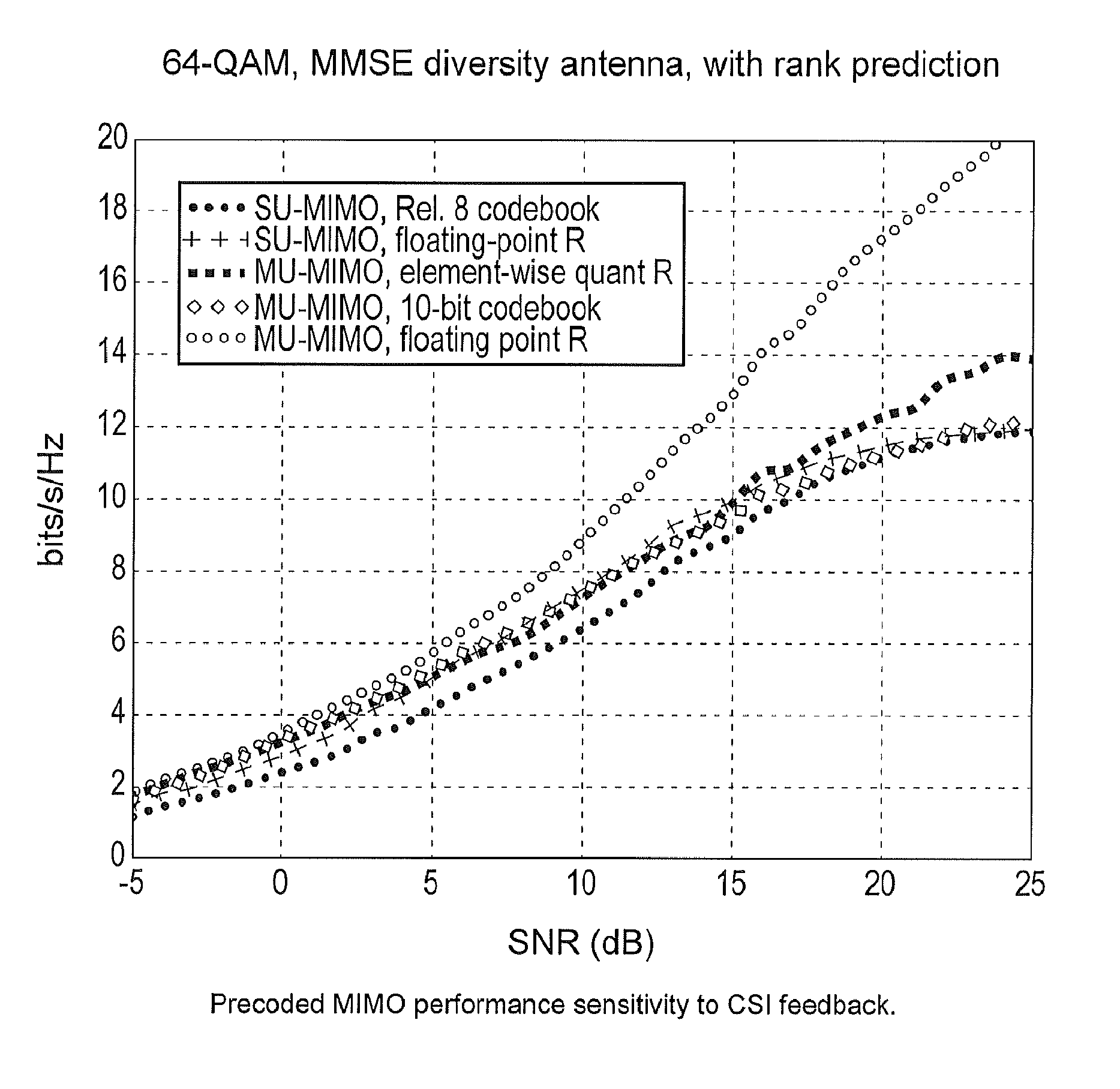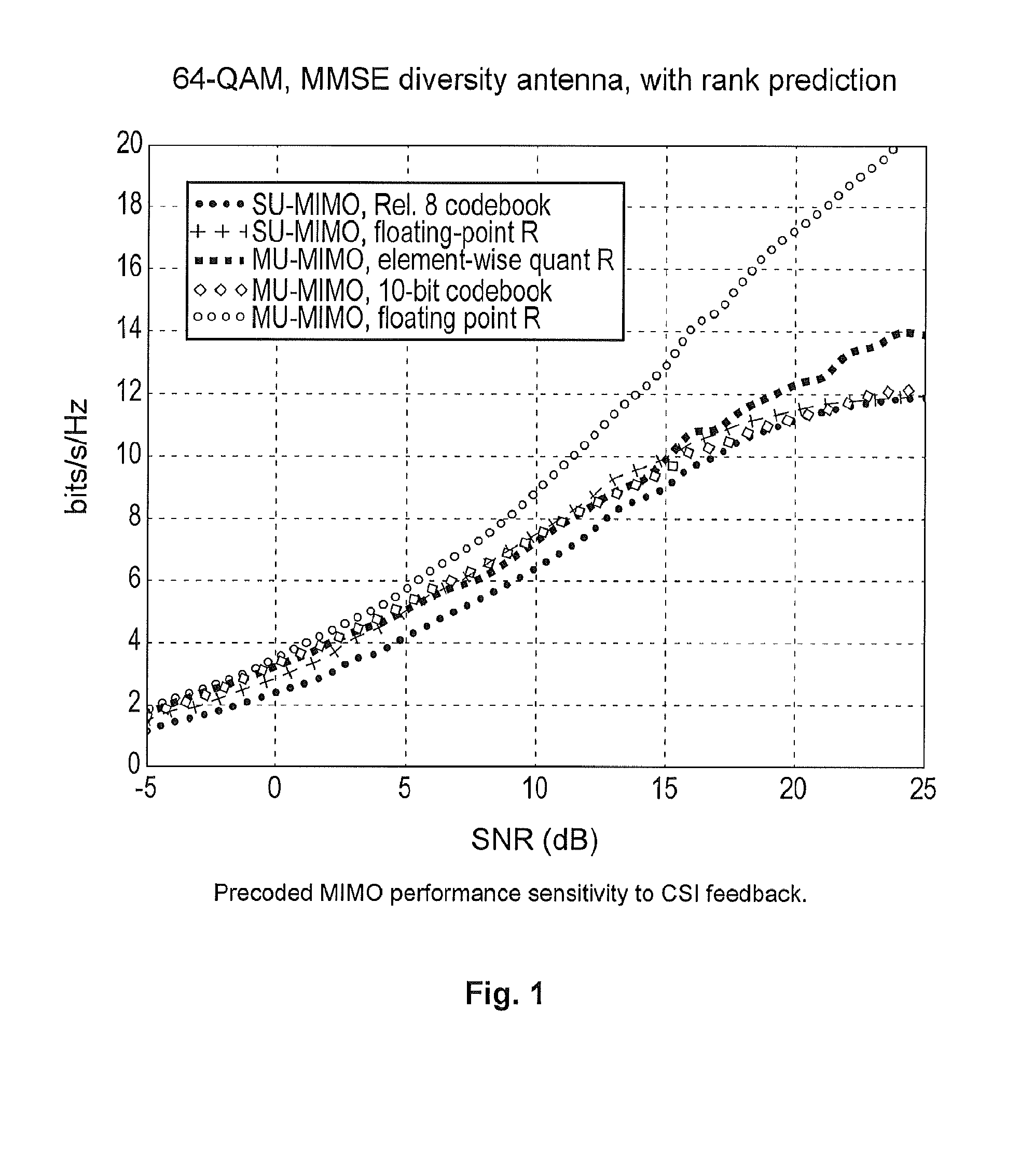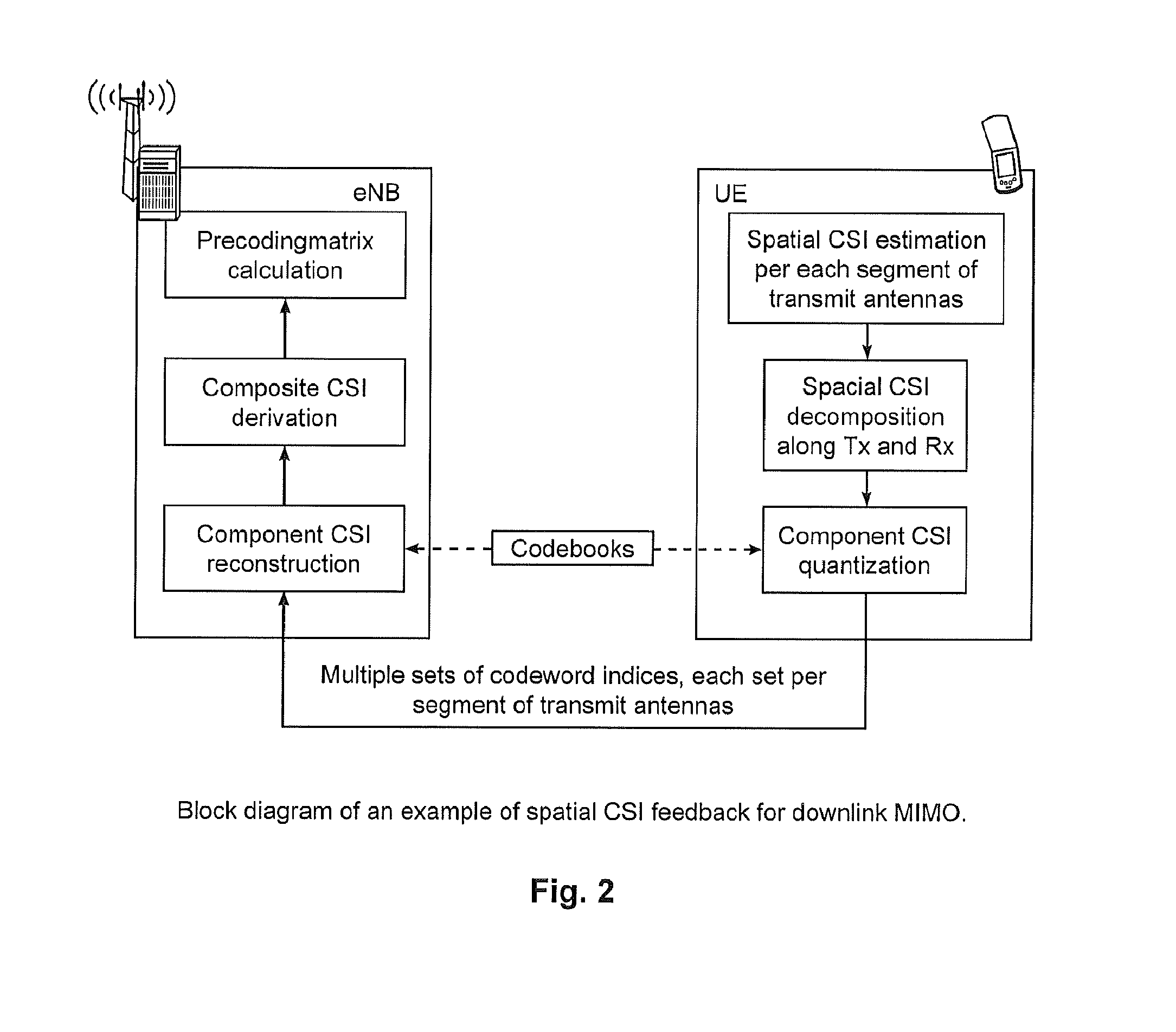Method and system for spatial channel state information feedback for multiple-input-multiple-output (MIMO)
a spatial channel and information feedback technology, applied in the field of spatial channel state information feedback for multiple inputs and multiple outputs, can solve the problems of affecting the performance of su-mimo and mu-, csi feedback cannot utilize too many bits, and quantization error decreases
- Summary
- Abstract
- Description
- Claims
- Application Information
AI Technical Summary
Benefits of technology
Problems solved by technology
Method used
Image
Examples
Embodiment Construction
[0018]The method and system described below provide an efficient way to accurately feedback spatial CSI for uncorrelated MIMO channels, particularly when the number of transmit antennas is equal to or greater than four.
[0019]Spatial discrimination information of each sub-channel of MIMO is provided as feedback at both the multi-antenna transmitter and the multi-antenna receiver, connecting the UE and one segment of transmit antennas. With the UE the transmitter (in multiple segments) and the receiver side spatial discrimination information of each cell-UE connection as feedback, the transmitter can determine the composite spatial CSI over transmit antennas of entire transmission points. This technique is applicable to mobile terminals with single or multiple receiving antennas. The spatial discrimination information is primarily subband short-term.
[0020]The spatial discrimination information at the receiver side for each segment of transmit antennas can be derived directly from the ...
PUM
 Login to View More
Login to View More Abstract
Description
Claims
Application Information
 Login to View More
Login to View More - R&D
- Intellectual Property
- Life Sciences
- Materials
- Tech Scout
- Unparalleled Data Quality
- Higher Quality Content
- 60% Fewer Hallucinations
Browse by: Latest US Patents, China's latest patents, Technical Efficacy Thesaurus, Application Domain, Technology Topic, Popular Technical Reports.
© 2025 PatSnap. All rights reserved.Legal|Privacy policy|Modern Slavery Act Transparency Statement|Sitemap|About US| Contact US: help@patsnap.com



